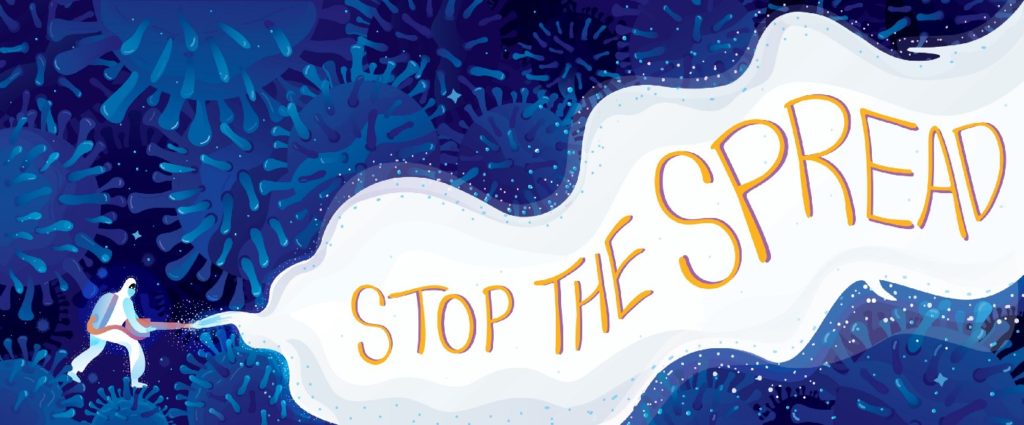
Information disorder surrounding COVID-19: we all have a word to (not) say
The Global Web Index found that over 80% of consumers in the US and the UK say they consume more content since the COVID-19 outbreak, with broadcast TV and online videos being the primary mediums across all generations and genders. Additionaly, 68% of consumers are seeking out pandemic updates online over any other activity. In Portugal, we found almost the same scenario: between the first week of March – when the first positive cases for COVID-19 emerged – and the third week of March, the weekly views of information sites skyrocketed 78%.
We have never consumed as much information as we are consuming now, and never before has it been so important to society’s health. On the other hand, the coronavirus crisis created an avalanche of news, much of it confusing and inconsistent. An “infodemic” – as stated by the World Health Organization’s General Director, Tedros Adhanom – is spreading alongside the COVID-19 pandemic. The result is dangerous: an excessive amount of information about the new coronavirus and the harm it causes, which can make it even harder to manage the public health crisis that has reached more than 200 countries around the world and more than 3.5 million people.
A report published on April 17th by the Reuters Institute for the Study of Journalism found that about one third of social media users across the United States, as well as Argentina, Germany, South Korea, Spain and United Kingdom, reported seeing false or misleading information about the coronavirus. The same document argues that this is a problem with the media in general: “A majority of respondents in every country say that the news media have helped them understand the crisis and explain what they can do. However, about one in three also say they feel the news media have exaggerated the pandemic.”
In this situation, misinformation, disinformation and malinformation come into play. The phenomenon is not new, but nowadays it is amplified through social networks, spreading even faster than the virus. This not just about false information, it’s about the way it is presented to the general public. It is about trusting the source, who are actually matter experts, and not the spin doctors.”Let’s see what the experts have to say about these concepts.
Claire Wardle is a leading expert on social media, user generated content, and verification. Her research focuses on the critical intersection of technology, communications theory, and mass and social media. She explains:
“Much of the discourse on ‘fake news’ conflates three notions: mis-information, disinformation and mal-information. But it’s important to distinguish messages that are true from those that are false, and messages that are created, produced or distributed by ‘agents‘ who intend to do harm from those that are not:
Dis-information: information that is false and deliberately created to harm a person, social group, organization or country;
Mis-information: information that is false, but not created with the intention of causing harm;
Mal-information: information that is based on reality, used to inflict harm on a person, organization or country.”
The need for quality science communication is stronger than ever, and in a pandemic, it should keep its inherent requirements, such as the need for clarity and accuracy. But gets much more peculiarities; one of these is the uncertainty even on scientists side, and the challenge of communicating it. Science needs time to come to well-founded conclusions, while the public and journalists want quick answers. In this context, I would like to quote two more experts in this field, that are part of communication offices of two important Portuguese scientific institutions and have recently published an opinion article about the challenges they are facing at this moment. They say:
“The scientific uncertainty is an inherent property of the scientific method. Scientists learn to deal with uncertainty because it is a kind of commitment to transparency. They transform uncertainties (questions) into certainties (facts), and new questions are generated throughout this process. But, in the pandemic context in which we live, often arise questions and concerns for which science doesn’t have a ‘yes’ or ‘no’ answer. And society is not prepared for this uncertainty.”
Transparency is inalienable to keep trust, but in some cases, it must be handled with care, in order to not cause panic. Because last, but not least, we are talking about social responsibility. And social responsibility is something that everyone should take care of: information sources in the way they decode complex and sensitive information, journalists choosing competent authorities who able to provide relevant and high-quality information and a public that has the understanding to choose between credible media outlets and not just taking everything that is shared online as facts. At this point, we could also talk about the way some entities and enterprises are taking advantage of the COVID-19 pandemic to have media projection, even if they are not experts on epidemiology or public health. But this would be a whole other article.
With that said, we all have a word (not) to say. We all have a post (not) to share. We all have someone (not) to listen to.
